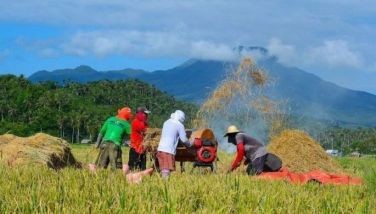Vetiver grass seen to prevent soil erosion
MANGALDAN, Pangasinan, Philippines – The adoption of Vetiver Grass Technology (VGT) through the initiative of Pangasinan fourth district Rep. Gina de Venecia was launched here last week to prevent soil erosion along riverbanks.
De Venecia, who was a guest during the second World Summit on Ecological Safety held this month in Bali, Indonesia, said the use of VGT is timely as the problem of global warming is serious.
She said planting of vetiver grass to prevent soil erosion has been successfully tested in Vietnam, Nigeria, Venezuela, Australia and China.
De Venecia said vetiver grass would be planted in Mangaldan to strengthen the river banks and earth dikes in 12 barangays where Angalacan River passes through, namely Guesang, Landas, Navaluan, Osiem, Nibaliw, Tebag, Salaan, Pogo, Palua, Macayug, Inlambo and Embarcadero.
Municipal agricultural officer Roberto Tamondong will take charge of the adoption of the technology.
De Venecia said the VGT has long been used as a bio-engineering tool for erosion control and slope stabilization. “The VGT was first developed by the World Bank for soil and water conservation in farmlands,” she said.
De Venecia said, “ According to a study by the Queensland Department of Natural Resources, vetiver grass has an extensive and thick root system that binds the soil, and at the same time makes it very difficult to be dislodged under high velocity flows of water.”
She added that the grass could also withstand prolonged submergence in flood water, and more importantly, its vertical root system, with very little lateral root growth, ensures that, when intercropped, it does not compete with cash crops for nutrients.
In October 1999, some 50 hectares of agricultural land and 29 houses along the Bued river in Binday, San Fabian were literally swept away by the rampaging flood water.
A similar devastation happened in Sitio Pontok in Bonuan Binloc in 2010, when a hectare of land was washed away by the overflowing Cayanga River due to a seasonal typhoon.
To prevent the recurrence of these destructive calamities, De Venecia prioritized the construction of the P36 million spur dikes in Binday in San Fabian town and the P20 million spur dikes in Sitio Pontok, Dagupan City.
- Latest





























